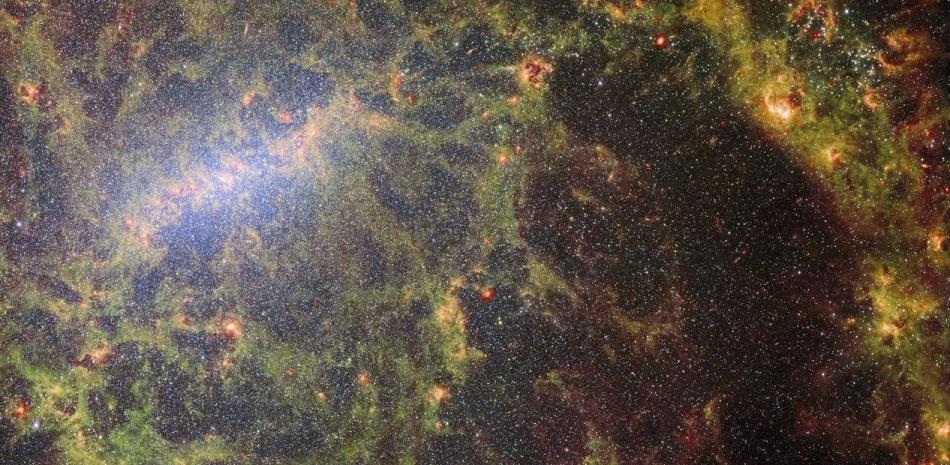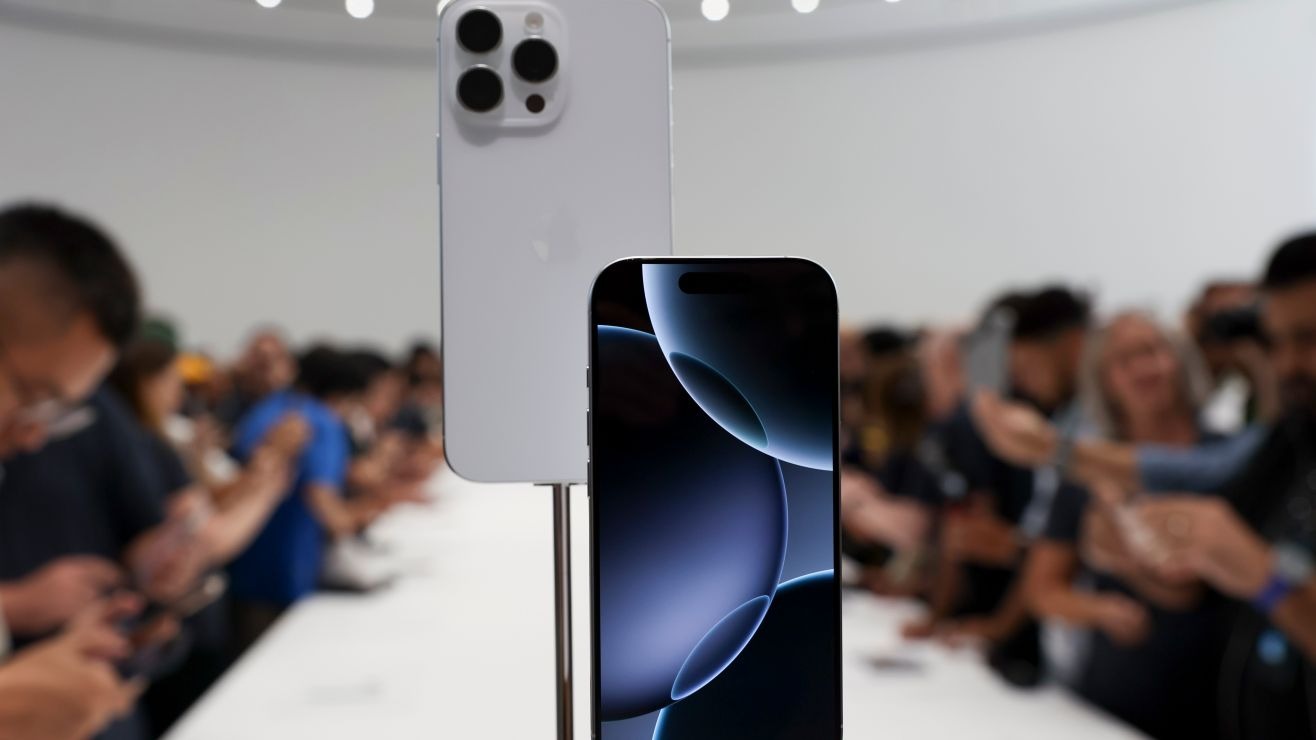(CNN) — When the OSIRIS-REx spacecraft passes Earth on Sunday, it is expected to deliver a rare cosmic gift: a beautiful sample collected from Bennu, an asteroid near our planet.
If all goes according to plan, the spacecraft will send a capsule containing about 250 grams of rocks and soil from space to a landing zone in the Utah desert.
NASA will broadcast Live sample delivery starting at 10am Miami time on Sunday. The capsule is expected to enter Earth’s atmosphere at 10:42 a.m. Miami time, traveling at a speed of 44,498 km/h. It will land in Utah about 13 minutes later.
After releasing the capsule, OSIRIS-REx will continue its journey through the Solar System, where it will encounter another so-called asteroid. Apophis.
Because meteorites are “remnants” of those early days 4.5 billion years ago, studying the sample can help scientists understand important details about the origin of our solar system. But the model could also provide information about Bennu’s potential future collision with Earth.
NASA has been preparing for years to return the first asteroid sample collected in space to Earth. Mission milestones to date and what awaits us.
The spacecraft captured detailed images of the asteroid’s surface.
(Credit: NASA/Goddard/University of Arizona)
Space travel of a spaceship
OSIRIS-REx, short for Origins, Spectral Interpretation, Resource Identification, Security-Regolith Explorer, has been on a remarkable journey for the past seven years. Launched from Cape Canaveral in 2016, the NASA spacecraft reached Bennu orbit in December 2018.
OSIRIS-REx, the first US mission to a near-Earth asteroid, made history many times over. It made the closest orbit of a planetary body by a spacecraft (and Bennu became the smallest object orbited by a spacecraft).
OSIRIS-REx surveyed the entire asteroid to determine the best place to collect a sample. Bennu is approximately 500 meters wide and is composed of rocks held together by gravity.
The views of Bennu provided by the spacecraft allowed the mission team to obtain unprecedented information about the asteroid, including the discovery that ice and carbon in Bennu’s rocks are present in forms relevant to life. The team also saw particles released from the asteroid into space.
On October 20, 2020, the spacecraft flew closer and closer to the asteroid until it carried out a historic TAG (touch-and-go) sample collection mission.
Throughout the mission, problems arose that threatened its success, as the spacecraft’s sample collection chief collected too much material to seal the container properly, leaking valuable asteroid material into space.
During the historic collection event, the sample leader of the OSIRIS-REx spacecraft sank to a depth of 0.5 meters below the surface of the asteroid. Bennu’s exterior is made up of loose particles that aren’t securely held together, and the spacecraft will investigate what happened when it collected a sample. If the ship hadn’t fired its thruster after a quick collection of dust and rock, it might have crashed directly into the asteroid.
It was then that the mission team discovered that the surface of the asteroid resembled the hollow of plastic balls.
Image of the OSIRIS-REx spacecraft descending toward the rocky surface of the asteroid Bennu.
(Credit: NASA/Goddard/University of Arizona)
The OSIRIS-REx team has met and overcome these challenges, and the spacecraft is scheduled to return the largest sample collected by a NASA mission since Apollo astronauts brought back lunar rocks decades ago.
The team was also able to organize a final flyby of Bennu in April 2021, giving them a chance to see how OSIRIS-REx disturbed and changed the asteroid’s surface during sample collection. The before-and-after photos showed some intriguing differences created by collecting samples and firing the spacecraft’s thrusters after it drifted away from the asteroid, including the movement and rearrangement of large rocks on the asteroid’s surface.
Back to earth
Since saying goodbye to Bennu in May 2021, OSIRIS-REx has been on its way back to Earth, circling the Sun twice so that it can pass by our planet in time to leave the asteroid sample.
NASA and Lockheed Martin Space have spent much of this year rehearsing every step of the sample recovery process.
If the spacecraft’s trajectory is on track, the sample capsule is expected to separate from OSIRIS-REx early Sunday morning, about 102,000 kilometers from Earth. Since leaving Bennu, the spacecraft has performed several maneuvers to direct its thrusters in time to pass Earth and release the capsule. The capsule will land at the Department of Defense’s Utah Test and Training Range, 58 kilometers by 14 kilometers.
Parachutes will gently land the capsule at 17.7 km/h and crews will be ready to retrieve the capsule when it is safe, said Sandra Freund, OSIRIS-REx project manager at partner Lockheed Martin Space. Work with NASA to build the spacecraft, provide flight operations and help recover the capsule.
A helicopter will carry the sample in a cargo net and deliver it to a temporary clean room set up at the range in June. There, a team will prepare the sample container for transport on a C-17 flight to NASA’s Johnson Space Center in Houston on Monday. Details about the model will be revealed in a NASA broadcast from Johnson on October 11.
Scientists will spend the next two years studying the rocks and soil in a special clean room at the Johnson Space Center.
A better understanding of the population of near-Earth asteroids like Bennu that could collide with our planet is critical. A better knowledge of their composition and orbits is key to predicting which asteroids are likely to come closest to Earth and when, as well as developing methods to deflect them.
The sample will be separated and sent to laboratories around the world, including OSIRIS-REx mission partners at the Canadian Space Agency and the Japan Aerospace Exploration Agency. About 70% of the specimens remain intact in the repository so that future generations, with better technology, can learn more than is possible now.
The display will reveal information about the formation and history of our solar system and the role of asteroids in the development of habitable planets like Earth. Scientists believe that carbonaceous asteroids like Bennu collided with Earth early in its formation, providing elements such as water.
The model is expected to land at a Department of Defense test and training facility in Utah, where rescue teams have been training for months.
(Credit: Keegan Barber/NASA)
“We’re looking for clues that explain why Earth is this rare gem of space with a habitable world, oceans and a protective atmosphere,” explains OSIRIS-REx principal investigator Dante Lauretta of the University of Arizona in Tucson.
“We believe that all of that stuff was brought back by these carbon-rich asteroids before our planetary system formed. We believe that we’re bringing back that kind of stuff, that is, maybe representatives of the seeds of life. Asteroids gave us the beginning of our planet, and that gave us this amazing biosphere, biological evolution. led to and we are here today.





:quality(85)/cloudfront-us-east-1.images.arcpublishing.com/infobae/KTKFKR763RBZ5BDQZJ36S5QUHM.jpg)